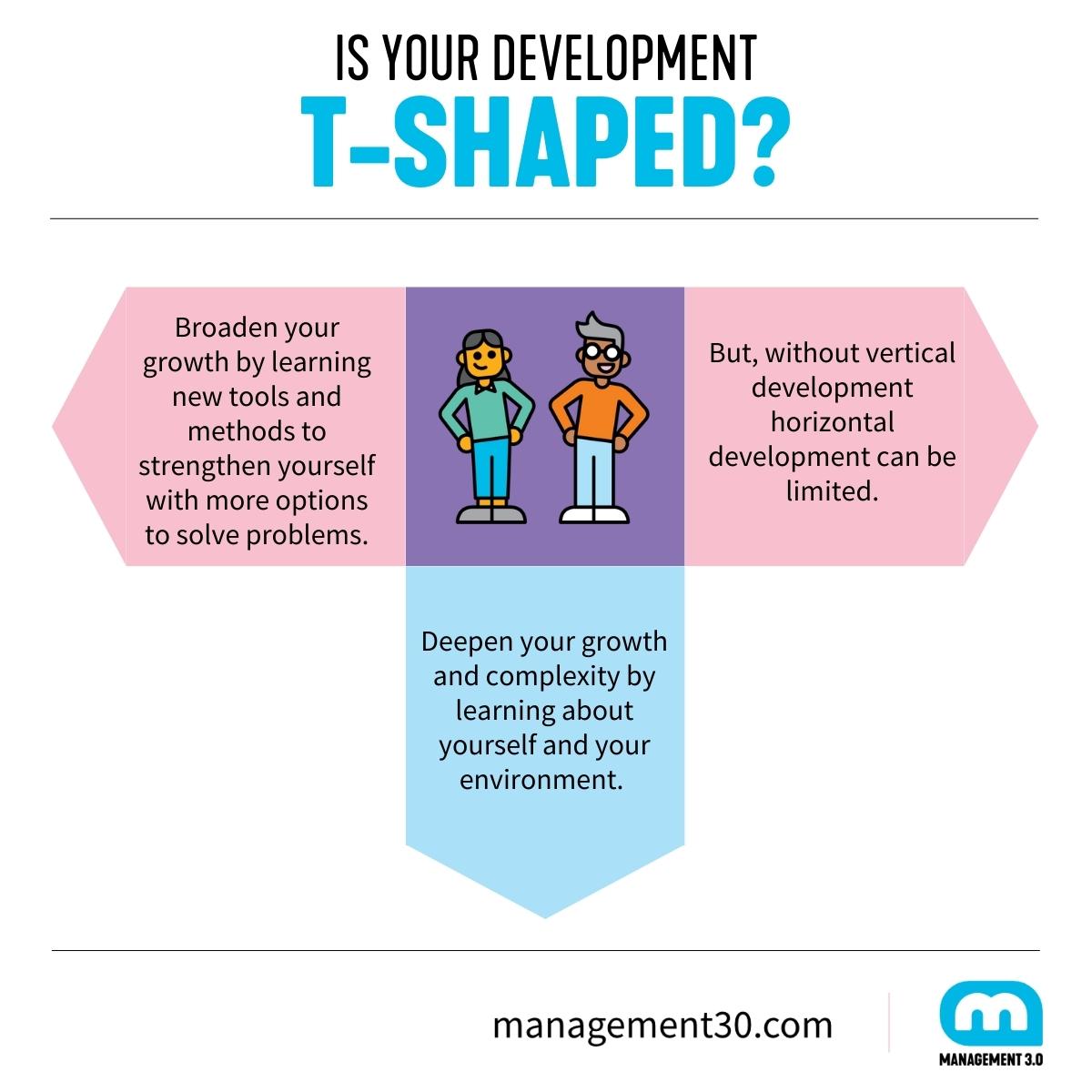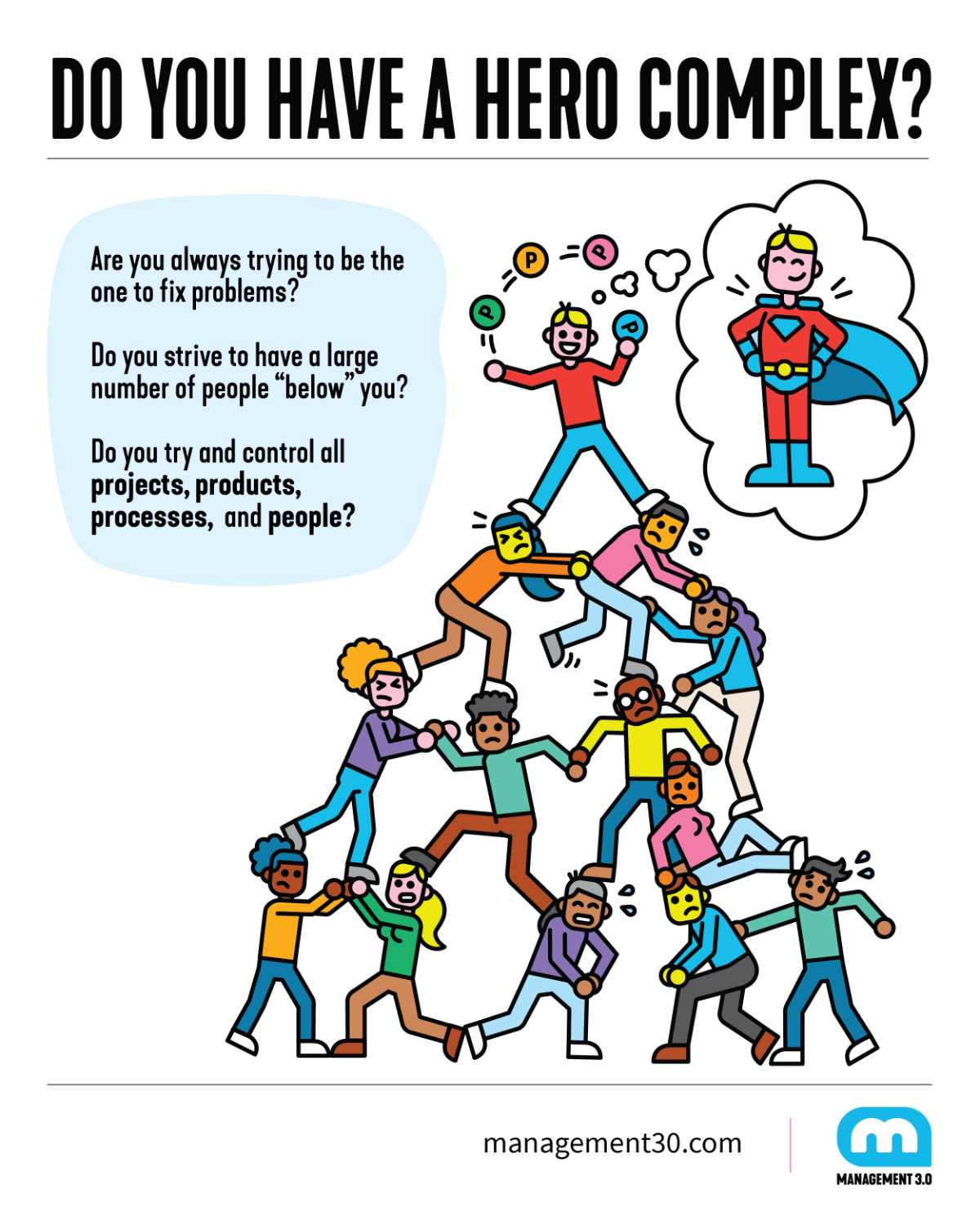In this article Thomaz Ribas, Management 3.0 Facilitator from Brazil, shares the main leadership challenges he faced during his leadership journey and some insights on how to overcome them. His intent is to help leaders at all levels of an organization, including those with informal leadership roles, to overcome some of their own challenges.
An era of change
As leaders, we are currently facing an enormous challenge. We are living in a period in which the speed of change and the complexity of work increases exponentially, creating great economic uncertainty for both companies and employees.
Increasing complexity manifests more and more as a tangle of interconnections between different people, organizations, cultures, religions, technologies and so on.
It is a period in which multiple generations collaborate in the same working environment. Diversity, albeit slowly, is finally starting to occupy some space in organizational leaders’ agendas and consciousness, no longer as something “cool”, but as one of the most effective levers to generate innovation.
Moreover, although women leaders continue to be vastly under-represented when conducting decision-making in politics, businesses, and communities, the far-reaching benefits of diversity and gender equality in leadership and decision-making are increasingly recognized in all spheres (see Women in the Workplace Report, PDF).

The search for collaboration, autonomy, flexibility, and creativity is valued higher than ever on the agenda of many executives. What a significant challenge to lead in this scenario!
In such an environment, there is no recipe for leadership. However, I believe we can learn from each other’s mistakes and look at ourselves to investigate what we should adapt in our own leadership stance: our ways of thinking and acting.
Does this resonate with you? If so, enjoy reading.
Leadership agility versus business agility
Business Agility Institute defines business agility as a set of organizational capabilities, behaviors, and ways of working that afford your business the freedom, flexibility, and resilience to achieve its purpose.
Also read: Business Agility Explained
Companies today are fighting to increase their business agility, however very few of them have success. Why is that?
John Kotter (professor at Harvard Business School) says that “we are in the midst of a leadership crisis” and that “most organizations today lack the leadership they need”.
Bill George, also from Harvard, states: “The problem is we have a wrongheaded notion of what constitutes a leader, driven by an obsession with leaders at the top.”
When we look at research, such as the State of Agile Report (digital.ai), we continually see leadership and culture among the top challenges for agility. Leadership and culture are interchangeably positioned among the main leadership challenges, as exemplified below:
- Organization resistance to change
- Insufficient leadership participation
- Organizational culture at the odds with agile values
In “Mastering Leadership“, Anderson & Adams say that “unless leaders work on their own development, they are unlikely to generate any sustainable business transformation and agility”.
In fact, I couldn’t agree more.
If organizations want to achieve business agility, they should develop another capability first: leadership agility.
One of my favorite definitions of leadership comes from Pete Behrens, a leadership coach and founder of the Agile Leadership Journey, a community to which I also belong as a trainer and coach:
Leadership is an act of service to focus, align and shape a group of people for a meaningful purpose toward valuable outcomes.
Pete also defines agile leadership as:
“Ongoing exploration in new thinking and practice to continually develop new habits. Agile leaders are more creative and collaborative, learning to adapt to the rapidly changing environments around them”.
Also read: What is collaborative leadership?
And here is another pro-tip: ask for feedback!
Kenneth H. Blanchard, an American author and consultant, says: “feedback is the breakfast of champions”. Every top athlete has one or more coaches.
Again, ask yourself: “Who can I talk to in order to gain honest feedback to improve my self-awareness?”
Leaders are faced with multiple factors which impede the evolution of their leadership. Let’s take a look at some common mistakes which can compromise a leader’s journey.

Common leadership mistakes
Throughout my career, I faced multiple challenges and I failed a lot. However, if we learn from failures, that’s an improvement!
So I’d like to share the four main mistakes I made during my leadership journey.
Leadership Mistake #1: Trying to change other people’s mindsets
It is not unusual to see leaders trying to change other people’s mindsets. I used to be the one who wanted to “change the senior manager’s mindset” which unfortunately resulted in more resistance and conflict.
Organizations mirror their leaders. In fact, the level of consciousness and maturity of an organization is limited by the level of consciousness and maturity of its leaders. So if we want to see change in the organization, first we need to change what we see when we look in the mirror – ourselves.
It reminds us of when the flight attendant instructs: “In case of a cabin pressure emergency, put on your own mask first before others”.
I believe this is the #1 challenge for us as leaders. We often think we are “correct”, we have “the right solutions” and people should be “convinced” about our ideas.
Have you ever charged yourself to get other people’s “buy-in”? That’s you trying to change other people’s minds. And very often, without noticing, we start to manipulate people.
When I noticed that my “fixer” mindset was blocking my leadership development, I decided to challenge it. I had to work on my emotional intelligence – the ability to understand and manage your own emotions, and those of the people around you.
Of course, I’m still on my journey. Working on our inner emotional intelligence is a never-ending effort. However, it was clear to me that our inner decisions influence our outer decisions. That helped me to think before acting, in order to make more effective decisions as a leader.
Leadership Mistake #2: Conflict with upper-level leaders
My dominant style is more reflective, meaning that in the midst of conflict or when under pressure, I prefer to listen first, ask some questions and try to adapt to the situation, especially if disagreement comes from someone above me in the hierarchy.
For many years, I struggled with sharing my motivations, feelings and needs in a conflict situation. This behavior was detrimental for my leadership development because I became accustomed to saying “yes”, accepting the unfair workload that I and my teams had to take.
My leadership style was clearly unhealthy; I remember the day when I became burned out as a consequence of my high levels of stress. My doctor encouraged me to take some days off and that was my wake-up call.
During my days off, I thought to myself: “Something is missing. I am exacerbating the problem, and I need to find a way of being part of the solution”.
When I started to explore how my own leadership awareness and behaviors were influencing others in less-than-optimal ways, I started to change from a “yes” person to an agile leader.
One of the tools that helped me a lot was Nonviolent Communication (NVC), created by PhD Marshall B. Rosenberg, which changed my life. After practicing it a lot, I was able to have more authentic, empathetic and courageous conversations with my director, peers and team members.
NVC was used productively as a foundational component for the Feedback Wrap tool – my favorite tool among the Management 3.0 set of tools.
Here is a lesson that I learned: unless we work on our inner development, self-awareness and emotional intelligence first, we are unlikely to reap the powerful benefits of the Feedback Wrap. As with most Management 3.0 tools, apply it to yourself first.
Leadership Mistake #3: Forgetting about the vertical development
Here is another lesson I want to share with you: learning different methods and tools is great. We increase our portfolio with more options to address problems. This is called horizontal (lateral) development.
However, if we don’t work on our vertical development, we will sooner or later reach a ceiling. By vertical development I refer to the depth and complexity of what we know about ourselves and our environment, which evolves throughout life.

Once again, ask yourself: what is my process of challenging my own perspectives, premises, beliefs, and, if needed, unlearning those and creating new ones?
One of my processes is journaling. Every night, before sleeping, I take 10 to 15 minutes to record my micro-learnings of the day, such as any situations where I felt I was in flow, issues that made me feel uncomfortable, and how I reacted to those, or words I used that caused disruption in conversation.
Leadership Mistake #4: Trying to always “fix” the problems
I got sick due to my fixer mindset. The burnout I mentioned above happened because I wanted to be the hero. I was that kind of leader who wanted the largest number of people “below” me. Yes, I used that kind of language (and language drives culture).
I wanted to be in “control” of all projects, products, people, and processes… All P’s! Even after being trained in multiple agile methods, I hadn’t actually changed.

In addition, one of the tools that helped me to “dissolve” my fixer mindset was the 7 Levels of Delegation. After practicing it for some months, I was able to help develop more creative and engaged teams.
Instead of being the maestro, I started a journey to become an enabler.
Conclusion
I believe that, in order to generate any sustainable business transformation and agility, leaders need to work on their own development. This was a hypothesis for me years ago, but today it proves to be a reality.
Look at leadership as a competency to be developed. Leaders are responsible for the organizational systems that block (or enable) agility. Culture is “the way we do things around here” (Edgar Schein), and the way we do things around here is determined by the way we leaders think.
Finally, I’d like to share my favorite definition of leader:
A leader is anyone who takes responsibility for improving oneself first, and then for improving one’s environment, be it a team, a company, society or the planet.
I wish you success in your leadership journey!
Header Photo by Luis Villasmil (via Unsplash)



